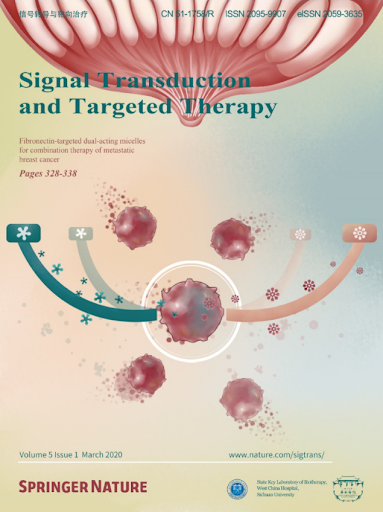解码生理和疾病中的溶血磷脂酸信号:绘制多模式和多节点信号网络。
IF 52.7
1区 医学
Q1 BIOCHEMISTRY & MOLECULAR BIOLOGY
引用次数: 0
摘要
溶血磷脂酸(LPA)信号已成为正常生理和疾病的中心调控轴,协调多种细胞过程,如增殖、生存、迁移、免疫调节和组织重塑。LPA最初被认为是一种调节平滑肌收缩和血管张力的生物活性脂质,后来被认为是一种涉及多种生理系统和广泛病理状态的多效信号分子。这些疾病包括癌症、神经退行性疾病、心血管和代谢综合征、炎症和纤维化疾病。LPA水平升高、autotaxin (ATX)的过度表达和LPA受体(LPARs)的异常激活有助于疾病的发生和进展,将LPA轴定位为诊断生物标志物和有希望的治疗靶点。本文介绍了LPA信号网络的多模式和多节点组织,详细介绍了不同器官系统的上游生物合成、受体多样性和下游效应物。针对ATX、LPARs和细胞内介质的治疗策略进行了严格评估,并对正在进行和正在出现的临床试验进行了回顾。此外,我们引入了一个基于上下文感知的人工智能神经网络模型来模拟LPA信号动力学,为预测建模和个性化治疗干预提供了框架。通过将机制见解与自适应计算框架相结合,本综述将LPA轴定位为健康和疾病中系统生物学指导的精准医学策略的强大而通用的目标。本文章由计算机程序翻译,如有差异,请以英文原文为准。
Decoding lysophosphatidic acid signaling in physiology and disease: mapping the multimodal and multinodal signaling networks.
Lysophosphatidic acid (LPA) signaling has emerged as a central regulatory axis in both normal physiology and disease, orchestrating diverse cellular processes such as proliferation, survival, migration, immune modulation, and tissue remodeling. Originally identified as a bioactive lipid that regulates smooth muscle contraction and vascular tone, LPA has since emerged as a pleiotropic signaling molecule implicated in multiple physiological systems and a wide spectrum of pathological states. These include cancer, neurodegenerative disorders, cardiovascular and metabolic syndromes, inflammatory conditions, and fibrotic diseases. Elevated LPA levels, overexpression of autotaxin (ATX), and aberrant activation of LPA receptors (LPARs) contribute to disease initiation and progression, positioning the LPA axis as both a diagnostic biomarker and a promising therapeutic target. This review describes the multimodal and multinodal organization of the LPA signaling network, detailing upstream biosynthesis, receptor diversity, and downstream effectors across diverse organ systems. Therapeutic strategies targeting ATX, LPARs, and intracellular mediators are critically assessed, along with a review of ongoing and emerging clinical trials. Furthermore, we introduce a context-aware AI-based neural network model to simulate LPA signaling dynamics, providing a framework for predictive modeling and personalized therapeutic interventions. By integrating mechanistic insights with adaptive computational frameworks, this review positions the LPA axis as a powerful and versatile target for systems biology-guided precision medicine strategies in both health and disease.
求助全文
通过发布文献求助,成功后即可免费获取论文全文。
去求助
来源期刊

Signal Transduction and Targeted Therapy
Biochemistry, Genetics and Molecular Biology-Genetics
CiteScore
44.50
自引率
1.50%
发文量
384
审稿时长
5 weeks
期刊介绍:
Signal Transduction and Targeted Therapy is an open access journal that focuses on timely publication of cutting-edge discoveries and advancements in basic science and clinical research related to signal transduction and targeted therapy.
Scope: The journal covers research on major human diseases, including, but not limited to:
Cancer,Cardiovascular diseases,Autoimmune diseases,Nervous system diseases.
 求助内容:
求助内容: 应助结果提醒方式:
应助结果提醒方式:


